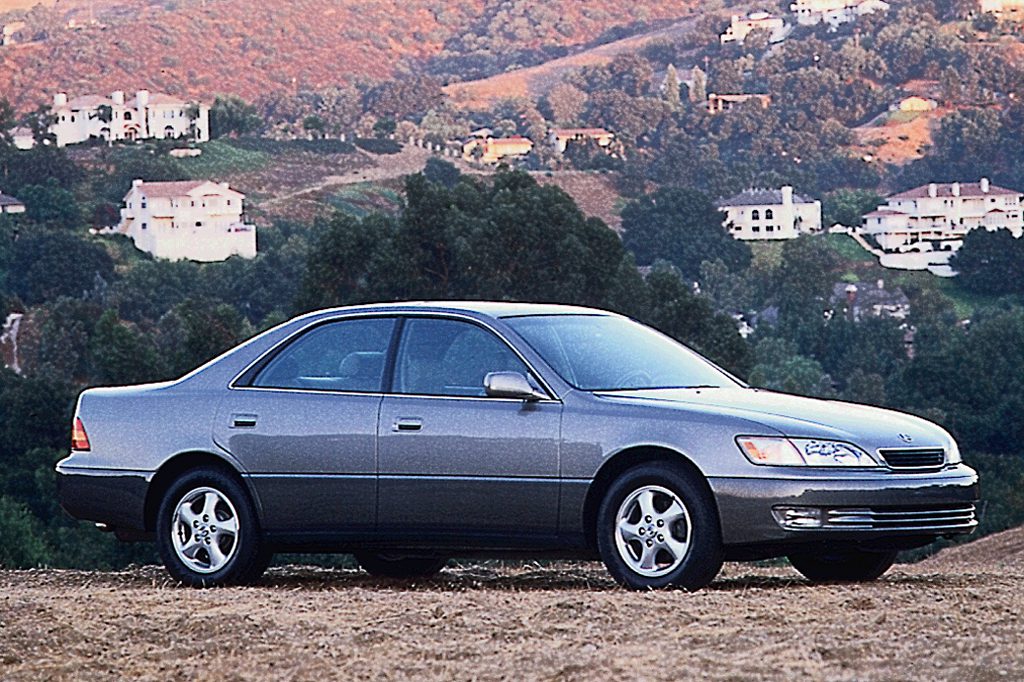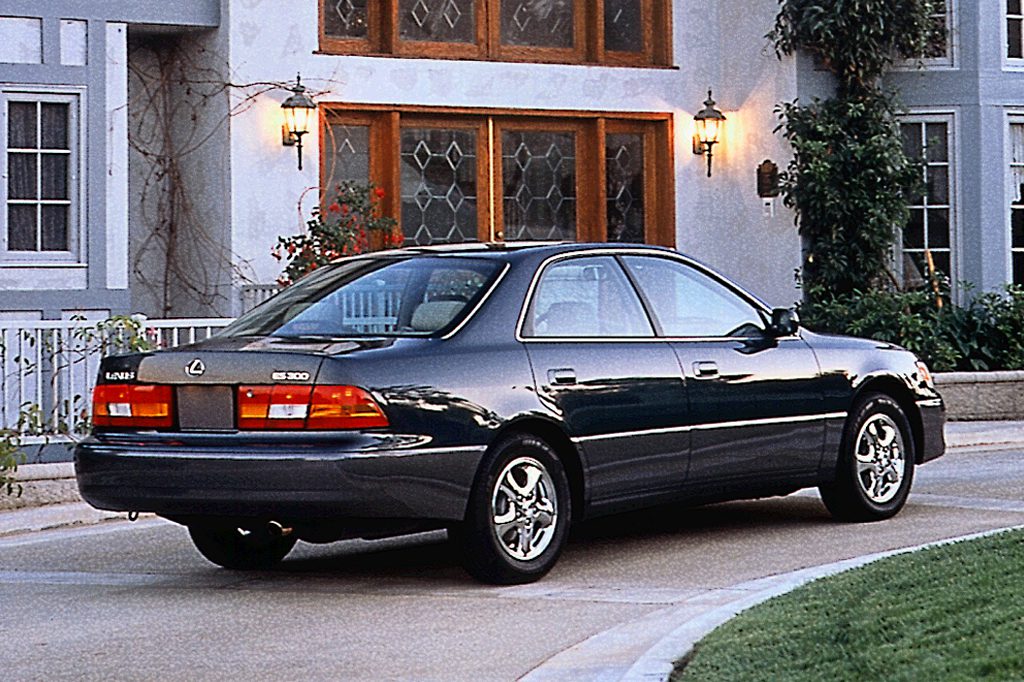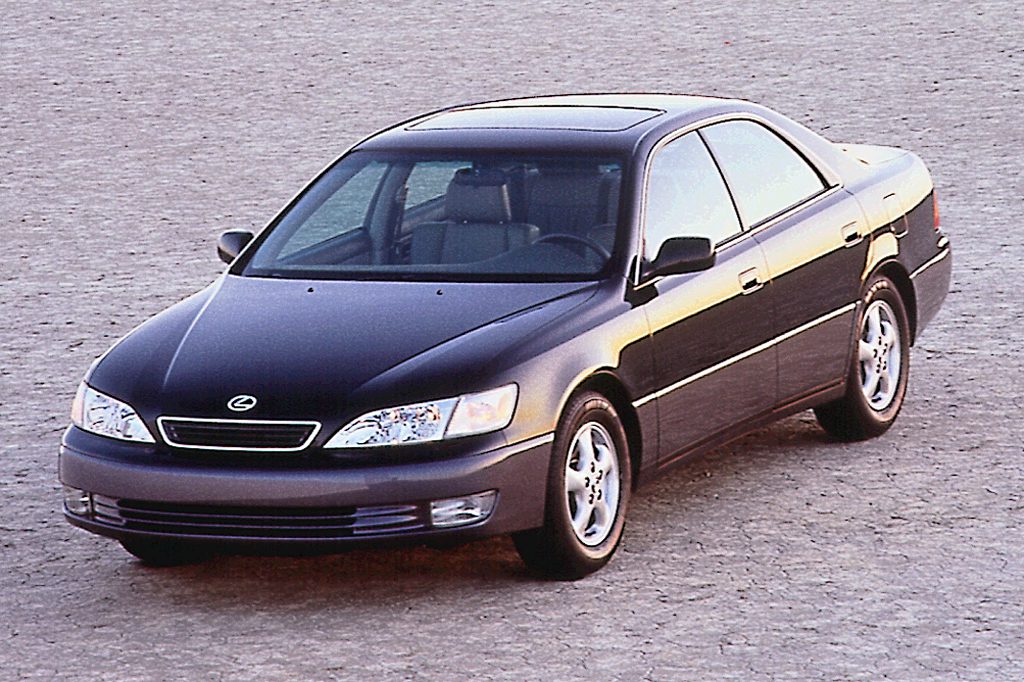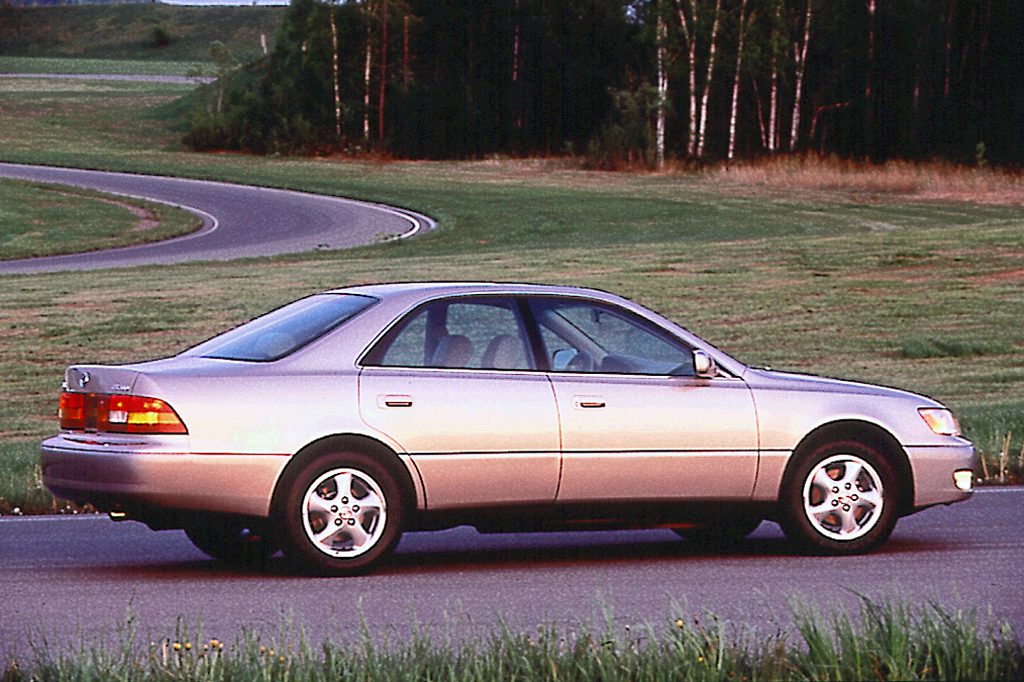| Premium midsize car; Built in Japan |
|
|
| Good condition price range: $3,300 – $7,200* |

1997 Lexus ES 300

1998 Lexus ES 300

1997 Lexus ES 300

1997 Lexus ES 300 interior

1997 Lexus ES 300
| Pros: |
|
| Cons: |
|
The ES 300 does just about everything a sedan of its class should, and does it very well. For shoppers who value comfort and elegance over sporty road manners, there’s no better near-luxury sedan on the market.
Overview
For 1997, Toyota’s luxury division redesigned its least expensive–and most popular–model. As before, the basic structure and mechanical components were shared with the Toyota Camry. Wheelbase grew by 2 inches, yielding an extra 1.3 inches of leg room in the back seat. Although the body measured 2.4 inches longer, weight actually dropped a bit. The “near-luxury” Lexus sedan rode a front-drive platform and held a 3.0-liter dual-overhead-cam V6 engine, which developed 12 more horsepower than before (now 200). Four-speed automatic was again the only transmission. Dual airbags were standard. A new 3-point lap/shoulder belt replaced the former lap belt for the center rear position. Antilock braking was standard, and traction control joined the option list. A newly optional “semiactive” suspension was designed to improve ride comfort and reduce body lean in curves and turns.
Yearly Updates
| 1998 ES 300 Little-changed for 1998, the ES 300 gained standard door-mounted side airbags and an engine immobilizer. |
| 1999 ES 300 For 1999, the ES 300’s V6 gained 10 horsepower (to 210). Also, a newly designed automatic transmission had revised ratios and shift logic. Electronic traction control, formerly an option, now became standard. |
| 2000 ES 300 Revised front/rear styling and more wood dashboard trim marked the 2000 models. New this year were rear child-seat anchors, electrochromic mirrors, a trunk pass-through lock, and automatic volume control for the sound system. The available driver’s-seat memory now incorporated mirror settings, optional heated seats now had two warmth levels, and the extra-cost Vehicle Skid Control system was bolstered by a new Lexus Brake Assist feature. New options included 16-inch wheels, high-intensity-discharge headlamps, and a ventilation microfilter. |
| 2001 ES 300 For 2001, ES replaced its previous major option groups with six new ones, each with leather-trim interior in combination with various other popular extras. Newly standard was an in-trunk emergency release with glow-in-the-dark handle. A new model was waiting in the wings. |
